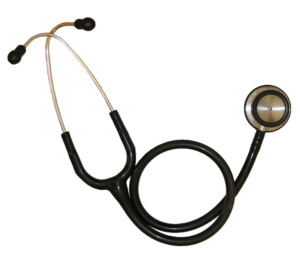 The problem of overdiagnosis and overtreatment has been discussed in a number of posts on this site. And back in April 15, 2016 I posted that a type of noninvasive thyroid cancer had just been reclassified as a noncancer. Now a study in the prestigious New England Journal of Medicine finds that looking at 12 countries (including the USA): "Overall, we estimate that more than 470,000 women and 90,000 men may have been overdiagnosed with thyroid cancer over two decades in these 12 countries..."
The problem of overdiagnosis and overtreatment has been discussed in a number of posts on this site. And back in April 15, 2016 I posted that a type of noninvasive thyroid cancer had just been reclassified as a noncancer. Now a study in the prestigious New England Journal of Medicine finds that looking at 12 countries (including the USA): "Overall, we estimate that more than 470,000 women and 90,000 men may have been overdiagnosed with thyroid cancer over two decades in these 12 countries..."
The researchers further state that the "vast majority" of these patients received a diagnosis of small, low-risk papillary carcinomas, and they underwent surgery and other treatments, but these interventions have not shown "benefits in terms of improved survival". In fact, studies show that watchful waiting is just as effective. From Medscape:
Thyroid Cancer Overdiagnosis in Half a Million Patients
A large fraction of thyroid cancer cases represent overdiagnoses, and at least half a million patients, most of them women, may have received unnecessary surgery and other cancer treatments, say researchers from the the International Agency for Research on Cancer (IARC), in Lyons, France.
Their warning about an epidemic of thyroid cancer overdiagnosis comes from an analysis of cancer registry data from 12 countries published August 17 in the New England Journal of Medicine . Salvatore Vaccarella, PhD, and colleagues at the IARC estimate that more than 470,000 women and 90,000 men may have been overdiagnosed withthyroid cancer in 12 "high-income" countries (Australia, Denmark, England, Finland, France, Italy, Japan, Norway, Republic of Korea, Scotland, Sweden, and the United States) from 1987 to 2007.
Most of these thyroid cancers were small, low-risk papillary carcinomas, they note. The "vast majority" of these patients underwent total thyroidectomy, and a "high proportion" also received neck lymph-node dissection and radiotherapy, but these interventions do not have "proven benefits in terms of improved survival," the researchers point out...."However, if we take the most recent available period, 2003 - 2007, as typical of current practice, we estimate that overdiagnosis in women accounts for 90% of thyroid-cancer cases in South Korea; 70 to 80% in the United States, Italy, France, and Australia; and 50% in Japan, the Nordic countries, and England and Scotland."
The overdiagnosis is blamed on increasing medical surveillance and the introduction of new diagnostic techniques, such as neck ultrasonography (since the 1980s) and, more recently, CTscanning and MRI. This new technology has led to the detection of a large number of indolent, nonlethal diseases that exist in abundance in the thyroid gland of healthy people of any age, the researchers comment, adding that most of these tumors are very unlikely to cause symptoms or death....."It is fair to say that the large number of thyroid cancers being diagnosed represent an epidemic of diagnosis, or an epidemic of medical testing, rather than an epidemic of true disease."
These results also mean that most patients are receiving treatment that does not benefit them and that subjects them to risks of injury to the voice, permanent hypoparathyroidism, as well as the attendant risks of radioactive iodine treatment, he pointed out.
The researchers caution against systematic screening for thyroid cancer and overtreatment of nodules <1 cm. "Watchful-waiting approaches should be considered a research priority and a preferable option for patients with low-risk papillary thyroid cancers," they say. Studies from Japan suggest that immediate surgery and watchful waiting are equally effective in preventing mortality, Dr Vaccarella said. One study showed that of 1235 patients with papillary microcarcinomas, only 3.5% experienced clinical progression of disease during a 75-month follow-up, and there were no deaths.
At Memorial Sloan Kettering Cancer Center, active surveillance has been offered to patients with low-risk, small, intrathyroidal cancers for several years, Dr Morris said. "Our results have mirrored the Japanese results, and fewer than 5% of patients end up showing any signs of tumor growth under close observation," he said.
